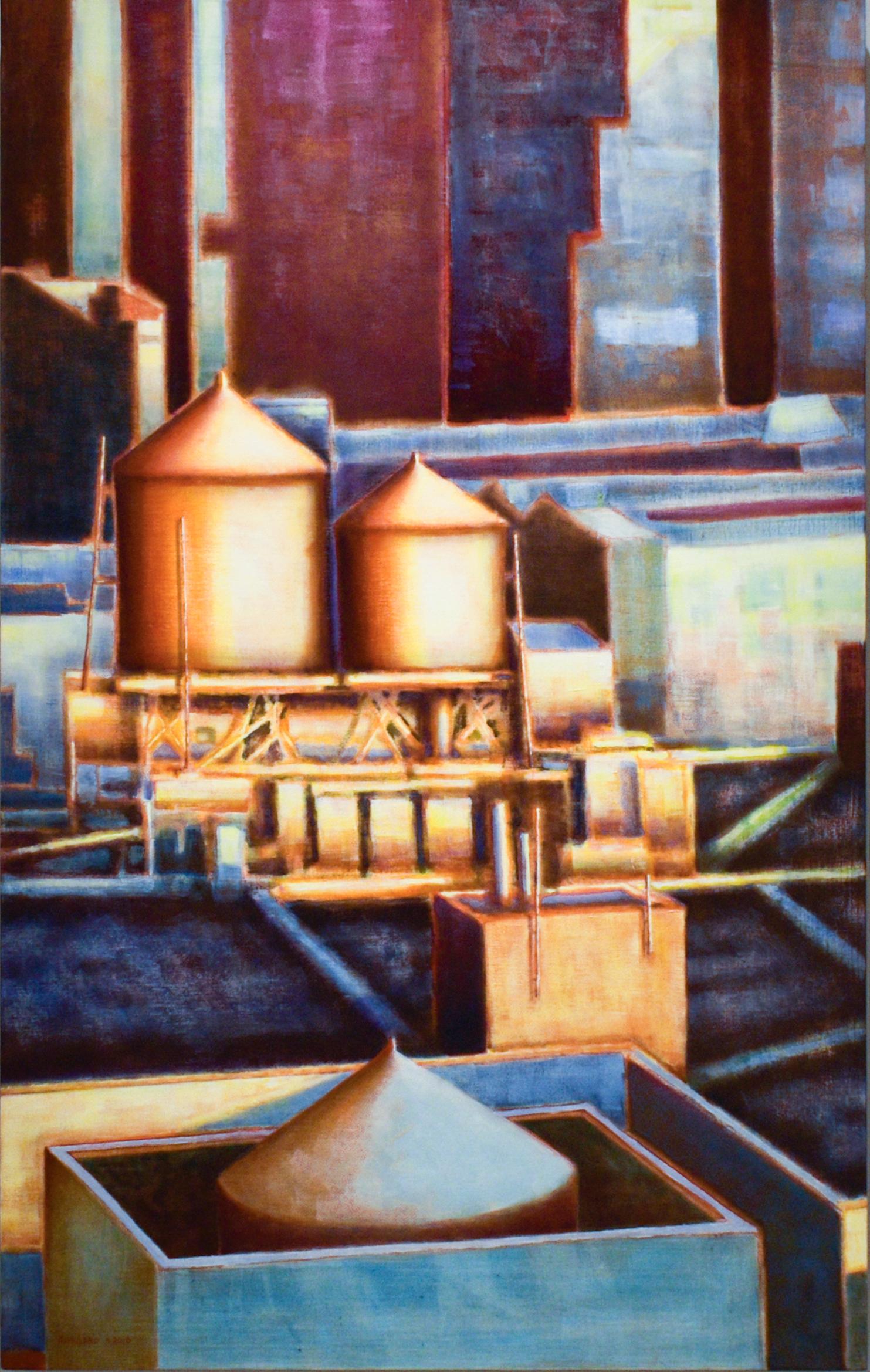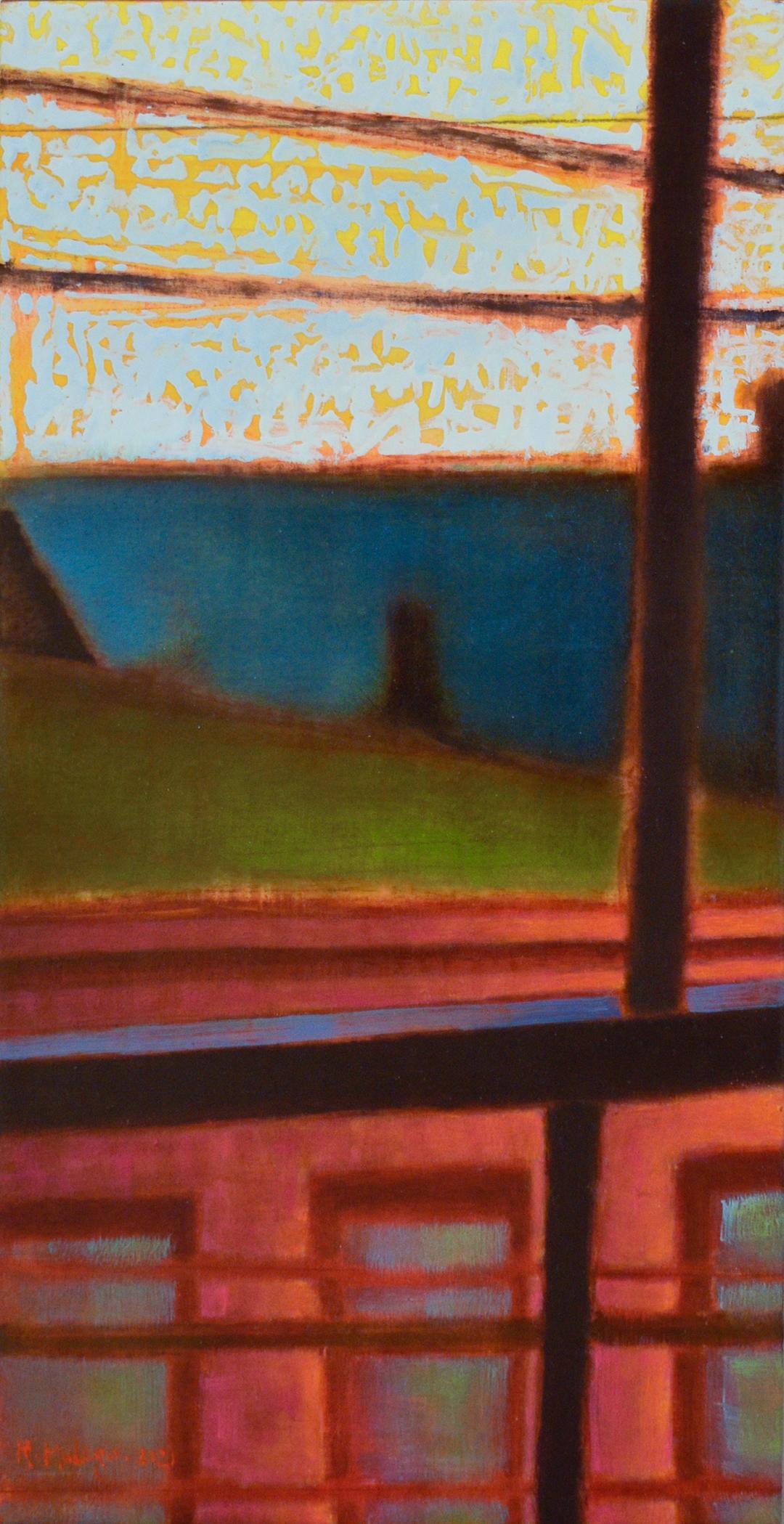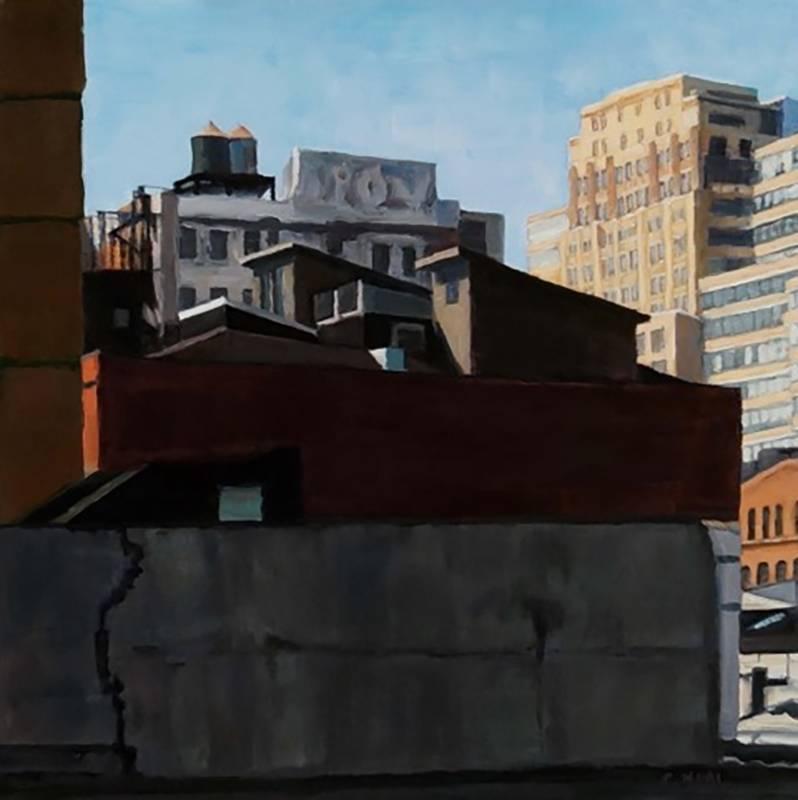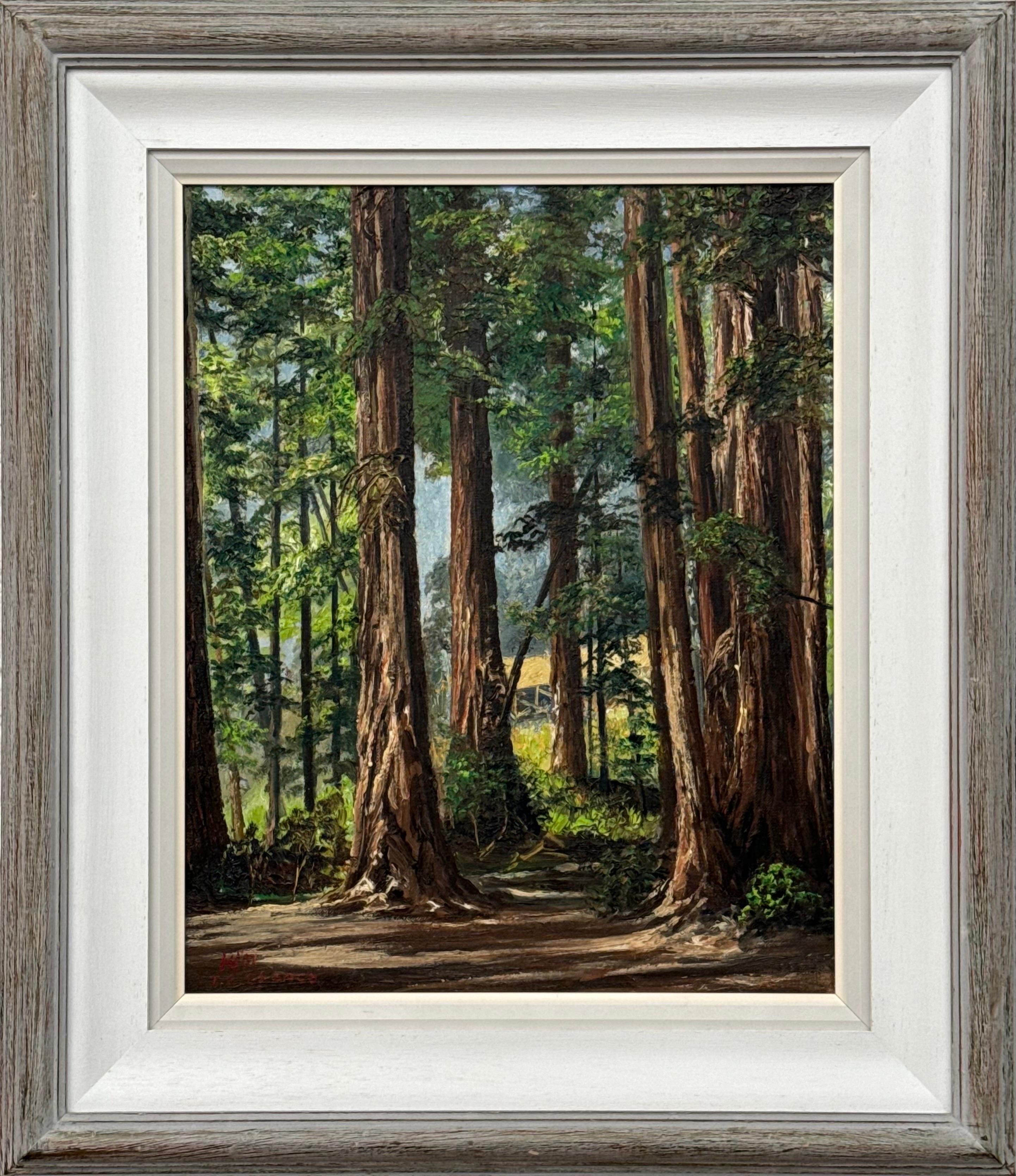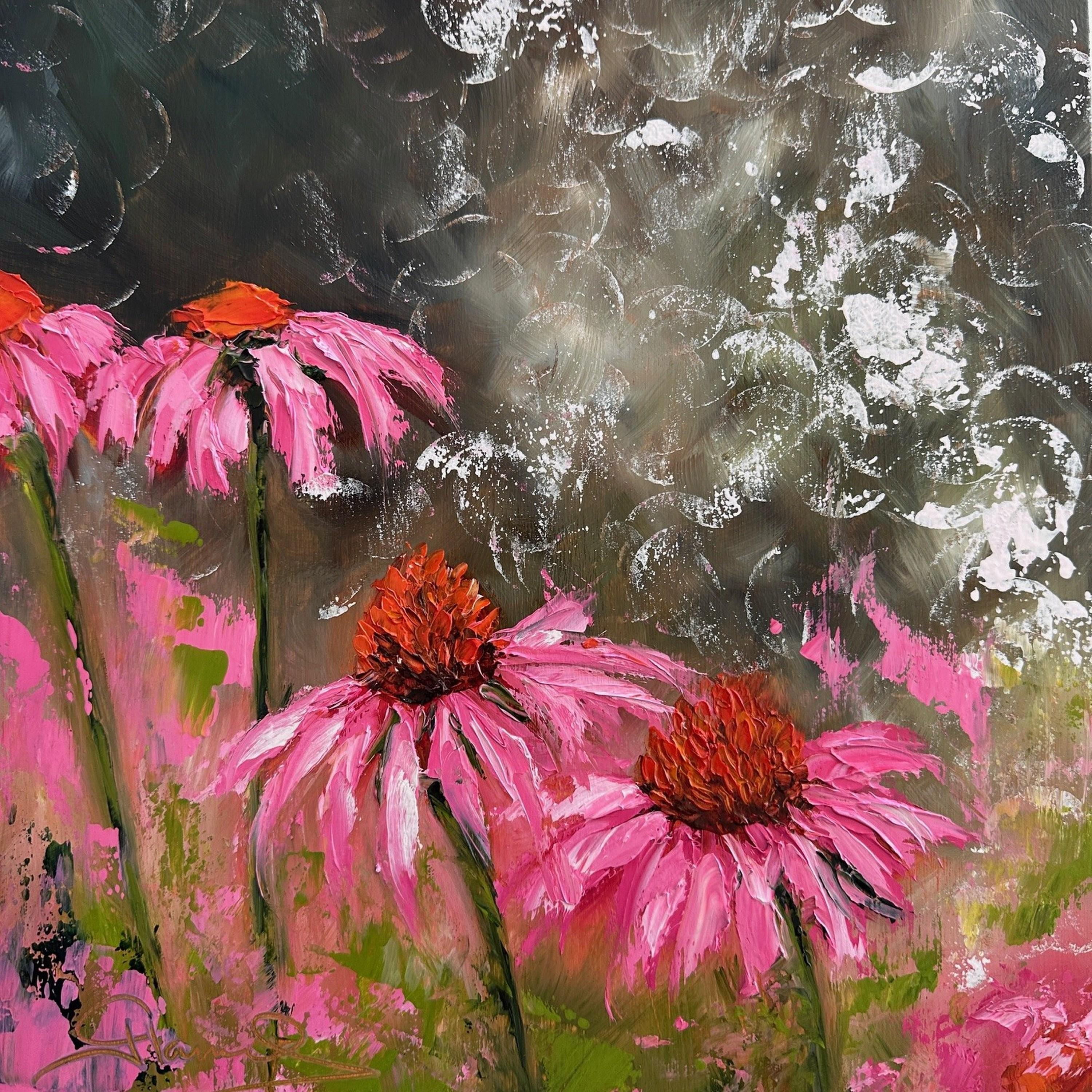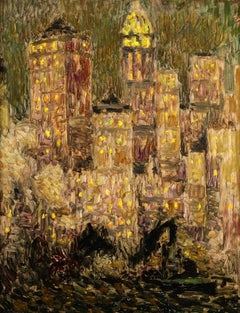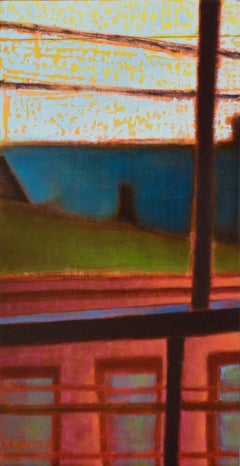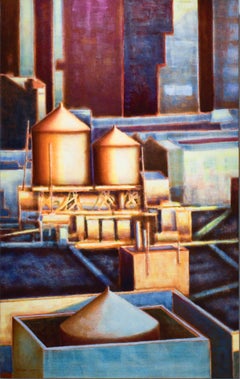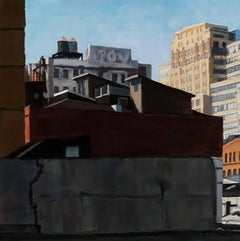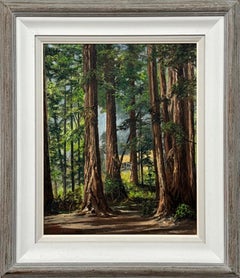Objekte ähnlich wie Elegante sur Les Grands Boulevards - Modernist Figurative Oil by Louis Anquetin
Möchten Sie mehr Bilder oder Videos?
Zusätzliche Bilder oder Videos von dem*der Anbieter*in anfordern
1 von 16
Louis AnquetinElegante sur Les Grands Boulevards - Modernist Figurative Oil by Louis Anquetinc.1895
c.1895
7.881,10 €
Versand
Angebot wird abgerufen …Das Versprechen von 1stDibs:
Authentizitätsgarantie,
Geld-Zurück-Garantie,
Stornierung innerhalb von 24 Stunden
Angaben zum Objekt
Signed oil on panel circa 1895 by French modernist painter Louis Anquetin. This beautiful piece depicts an elegant lady dressed in a blue dress and hat walking in the Grand Boulevards in Paris.
Signature:
Signed with cachet lower right
Dimensions:
Framed: 16.5"x20"
Unframed: 10.5"x14"
Provenance:
The estate of the painter
Acquired by the previous owner at the sale of the Estate of Louis Anquetin - Thierry de Maigret - Paris (Lot 35, 28th November 2008)
Louis Anquetin went to school in Rouen. He was given an allowance by his father, a well-off shopkeeper, to go and study painting in Paris. In 1882 he entered the free academy run by Cormon, where he was heavily influenced by the Impressionists, particularly Monet, whom he revered, but also Degas (especially his Japonist periods). Anquetin was extremely talented and made an impression on Van Gogh, who met him during his time in Paris, and Toulouse-Lautrec, a close friend who also admired his work. Some sources claim that Anquetin, Van Gogh, Toulouse-Lautrec and Émile Bernard met at Cormon's academy. Because of his great skill, Anquetin experimented with many of the techniques he encountered, perhaps at the expense of developing a real personality of his own. In 1887 the rigours of Pointillism and Seurat's theories on 'scientific Impressionism' seduced him, but not for long. In 1888 he met Émile Bernard and his friends, and discovered that they all shared an enthusiasm for the work of Gauguin, his contemporary subjects and flat areas of colour with bold outlines, which was known at the time as Gauguin's Synthetism. Artists would gather at the Café Volpini, where they also exhibited their Symbolist/Synthetist paintings. Following on from their reflections on the works of Gaugin, Bernard and Anquetin defined one aspect of his work under the term 'Cloisonnism'. The question of which of them came up with this term would later be heavily disputed.
Anquetin exhibited at the Salon des Artistes Indépendants for the first time in 1888. In 1891 he showed his works at the gallery Le Barc de Boutteville alongside the Nabis. He exhibited at the Salon of the Société Nationale des Beaux-Arts from 1890 to 1914, and became a member in 1907. In 1892 he exhibited at the Rose+Croix Salon at the Galerie Durand-Ruel. In 1812 he participated in the Salon d'Automne, where the theme was the 19th-century portrait. Here he showed his Portrait of Monsieur Janvier in the Role of Lampourde, which was probably painted before 1900 and is perhaps the same work as his 1887 Portrait of an Actor. As a result of these official events, Anquetin received a commission from the Gobelins manufactory for a tapestry cartoon on the subject of War and Peace, and was decorated with the Légion d'Honneur. Private commissions included a ceiling painting of Rinaldo and Armida in the house of Baron Empain in Brussels, a theatre curtain for the Théâtre Antoine in Paris, which was bought by the city authorities, and decorations for the Cercle Artistique in Nice.
In 1888 Anquetin's style was very similar to that of Émile Bernard, as can be seen, for example, in the former's Reaper in the Fields of 1886. The distinction between the two artists came with Anquetin's Portrait of an Actor and Woman in the Street. Then, in 1890, for a variety of reasons (his interest in anatomy, his desire to return to composition and grand subjects, and a quest for movement), Anquetin took to studying the 17th-century Flemish masters such as Rubens and Jordaens. He broke with the innovators for good and progressively returned to traditionalism. He was 30 at the time, and his youthful sense of adventure had gone. By 1896 he had abandoned all interest in modernity, as can be seen in his painting Fighting, which he exhibited in 1896. From that point on he permanently adopted the Rubenesque model in terms of his themes, the way that he arranged his compositions, and the details of his backgrounds and ornaments. He studied Rubens' technique in minute detail, for example Rubens' use of glazes to create transparent effects and give his colours a light, airy quality. When invited to write an essay on Rubens for the Comoedia review, Anquetin lamented the lack of interest in technique shown by his contemporaries and called for the establishment of a technique class at the École des Beaux-Arts.
Anquetin's artistic journey followed a trajectory parallel to that of his friend Émile Bernard. Like Anquetin, Bernard suddenly abandoned his youthful exuberance for an almost obsessive return to tradition, in his case a focus on 17th-century Spanish artists like Murillo, and Bolognese painters such as the Carracci, who founded the Accademia dei Desiderosi. Was Anquetin consciously abandoning modernism, or was he simply a casualty of the public's disaffection with modern art? Whatever the reason, he ended his days a solitary misanthrope. However, his talent still sometimes shone through, particularly when he was able to tap into human reality, as with his Self-portrait and Portrait of the Actor Firmin Gémier in 'La Rabouilleuse'. The paintings are nostalgic proof of what Signac once said about Anquetin: 'If a creative spirit had only a tenth of his talent, he would produce wonders.'
Museum and Gallery Holdings:
La Rochelle: Towers of La Rochelle
London (Tate Collection): Girl Reading a Newspaper (1890, pastel/paper); The Finish of the Horse Race (c. 1898-1899, watercolour/board); studies
Paris (MNAM-CCI): Racing; Child in Profile; Still-life Study; Woman in the Street; Portrait of the Marguerite Brothers; Study of a Male Nude Leaping (drawing); Bust of a Woman in Profile (pen); Cavalry Battles (pen)
- Schöpfer*in:Louis Anquetin (1861 - 1932, Französisch)
- Entstehungsjahr:c.1895
- Maße:Höhe: 41,91 cm (16,5 in)Breite: 50,8 cm (20 in)
- Medium:
- Bewegung und Stil:
- Zeitalter:
- Zustand:Very good condition.
- Galeriestandort:Marlow, GB
- Referenznummer:Anbieter*in: LFA02481stDibs: LU415316513862
Anbieterinformationen
5,0
Platin-Anbieter*in
Premium-Anbieter*innen mit einer Bewertung über 4,7 und 24 Stunden Reaktionszeit
Gründungsjahr 2001
1stDibs-Anbieter*in seit 2016
705 Verkäufe auf 1stDibs
Typische Antwortzeit: 1 Stunde
- VersandAngebot wird abgerufen …Versand von: Marlow, Vereinigtes Königreich
- Rückgabebedingungen
Einige Inhalte dieser Seite wurden automatisch übersetzt. Daher kann 1stDibs nicht die Richtigkeit der Übersetzungen garantieren. Englisch ist die Standardsprache dieser Website.
Authentizitätsgarantie
Im unwahrscheinlichen Fall eines Problems mit der Echtheit eines Objekts kontaktieren Sie uns bitte innerhalb von 1 Jahr für eine volle Rückerstattung. DetailsGeld-Zurück-Garantie
Wenn Ihr Objekt nicht der Beschreibung entspricht, beim Transport beschädigt wurde oder nicht ankommt, kontaktieren Sie uns bitte innerhalb von 7 Tagen für eine vollständige Rückerstattung. DetailsStornierung innerhalb von 24 Stunden
Sie können Ihren Kauf jederzeit innerhalb von 24 Stunden stornieren, ohne jegliche Gründe dafür angeben zu müssen.Geprüfte Anbieter*innen
Unsere Anbieter*innen unterliegen strengen Dienstleistungs- und Qualitätsstandards, wodurch wir die Seriosität unserer Angebote gewährleisten können.Preisgarantie
Wenn Sie feststellen, dass ein*e Anbieter*in dasselbe Objekt anderswo zu einem niedrigeren Preis anbietet, werden wir den Preis entsprechend anpassen.Zuverlässige weltweite Lieferung
Unsere erstklassigen Versandunternehmen bieten spezielle Versandoptionen weltweit, einschließlich individueller Lieferung.Mehr von diesem*dieser Anbieter*in
Alle anzeigenImpression de Brume - Impressionistische Figur in Landschaft, Öl von Edouard Cortes
Von Édouard Leon Cortès
Signierte Figur in Flusslandschaft Öl auf Platte um 1920 von gesuchten Französisch impressionistischen Maler Edouard Cortes. Dieses schöne Stück zeigt einen Arbeiter mit seinen Pferd...
Kategorie
1920er, Impressionismus, Figurative Gemälde
Materialien
Öl, Täfelung
Louis Hayet: „Les Grands Boulevards – Postimpressionistische Figuren in Stadtlandschaft“
Von Louis Hayet
Landschaft in Öl auf Tafel, um 1890, von dem französischen postimpressionistischen Maler Louis Hayet. Das Stadtbild zeigt elegante Figuren und Pferde und Karren in Les Grands Bouleva...
Kategorie
1890er, Post-Impressionismus, Figurative Gemälde
Materialien
Öl, Täfelung
The Arrival - New York - Postimpressionistische Landschaft Öl von Henri Le Sidaner
Von Henri Le Sidaner
Signiertes divisionistisches Landschaftsöl auf Tafel des französischen postimpressionistischen Malers Henri le Sidaner. Dieses atemberaubende Werk zeigt die Hochhäuser von New York bei Nacht. Lichter erhellen die Fenster in einer ansonsten dunklen Szene. Ein Dampfschiff fährt den Fluss entlang.
Unterschrift:
Signiert unten links
Abmessungen:
Gerahmt: 24.5 "x20"
Ungerahmt: 16 "x11.5"
Provenienz:
Louis Le Sidaner Collection
Kollektion Etienne Le Sidaner
Privatsammlung, Frankreich
Ausstellungen :
Paris, Musée Galliera, "Rétrospective Henri Le Sidaner", April 1948
Brüssel, Galerie de l'Art Belge, "Rétrospective Henri Le Sidaner", April-Mai 1951
Literatur:
Dieses Werk wird von einem Foto-Echtheitszertifikat von Yann Farinaux Le Sidaner begleitet
Dieses Werk wird in der kommenden Ergänzung zum Werkverzeichnis, das derzeit von Yann Farinaux Le Sidaner vorbereitet wird, enthalten sein.
Dieses Werk ist das einzige bekannte Gemälde von Le Sidaner, das in den Vereinigten Staaten ausgeführt wurde.
Es handelt sich um eines der letzten 25 Gemälde des Künstlers, die für die Galeries Georges Petit bestimmt waren. Die Galeries Georges Petit meldeten 1931 Konkurs an und nahmen das Werk nie in Empfang. Es wurde später verkauft - höchstwahrscheinlich an die Galerie Bernheim Jeune.
Henri Le Sidaner ging 1880 nach Paris und wurde 1884 Schüler von Cabanel an der École des Beaux-Arts. In den Jahren 1898 und 1899 lebte er in Brüssel und Brügge. 1900 zog er nach Gerberoy an der Oise und später nach Versailles.
Die Kunst von Le Sidaner liegt auf seltsame Weise zwischen der der späten Impressionisten, deren Divisionismus er praktizierte, und der von Eugène Carrière, die durch unbestimmte Farben und eine Vorliebe für eine gewisse neblige Atmosphäre gekennzeichnet ist. Er malte oft in Venedig und Brügge und ist bekannt für seine Dämmerungseffekte. C. Mauclair, ein vom symbolistischen Geist durchdrungener Schriftsteller, hat sein Talent vielleicht am besten beschrieben. Zu seinen bekanntesten Werken gehören Segnung des Meeres, Patrouille im Mondlicht, Kanal in Brügge und Der Herzogspalast und der Canal Grande in Venedig.
1887 stellte er zum ersten Mal in Paris im Salon des Artistes Français aus, wo er 1891 eine Medaille dritter Klasse und ein Reisestipendium erhielt. Außerdem stellte er in Paris auf dem Salon de la Société Nationale des Beaux-Arts und in Brüssel auf dem Salon de la Libre Esthétique aus. Auf der Pariser Weltausstellung von 1900 wurde er mit einer Bronzemedaille ausgezeichnet. 1930 wurde Le Sidaner, ein Offizier der Ehrenlegion, zum Mitglied des Instituts ernannt, um E. Laurent an der Académie des Beaux-Arts zu ersetzen. Retrospektiven seines Werks fanden 1974 im Museum von Dünkirchen, 1996 im Musée d'Art Moderne et Contemporain, Lüttich, und anschließend in Carcassonne und Limoux statt. Zu den weiteren Ausstellungen und Retrospektiven gehören Henri Le Sidaner en son jardin de Gerberoy, de 1901 à 1939, 2001 im Musée de la Chartreuese, Douai, und Henri Le Sidaner en Bretagne, 2002, im Museum von Pont-Aven.
Museen und Galerien
Châlons-en-Champagne: Segen für das Meer
Douai (Mus. de la Chartreuse): Roter Teppich; Soldatengrab; Letzte Kommunion; Porträt von Madame Piettre
Dublin: Tee
Dünkirchen: Waisenkinder machen einen Spaziergang
Lüttich (Mus. für moderne und zeitgenössische Kunst)
Morlaix (Mus. des Jacobins)
Nantes (MBA): Gedeckter Tisch in einem Park; Maiabend
Paris (MAM): Sonne im Inneren eines Hauses; Tisch
Pittsburgh (Carnegie MA): Mondlicht (um 1913, Öl auf Leinwand); Das Haus von Gerberoy: Abend (ca. 1930, Öl auf Leinwand)
Rom (Gal. Nazionale d'Arte Moderna...
Kategorie
1930er, Pointillismus, Landschaftsgemälde
Materialien
Öl, Täfelung
Sur la Plage – Impressionistisches Ölgemälde, Figuren in Küstenlandschaft von Alfred Stevens
Von Alfred Émile Léopold Stevens
Signiert und datiert Figuren in Seelandschaft Öl auf Platte von belgischen impressionistischen Maler Alfred Emile Leopold Stevens. Das Werk zeigt eine elegante Frau, die auf einem St...
Kategorie
1890er, Impressionismus, Figurative Gemälde
Materialien
Öl, Täfelung
8.316 € Angebotspreis
30 % Rabatt
Le Pont Neuf – Impressionistische Figuren in Landschaft, Öl von Amedee Marcel-Clement
Von Amedee Julien Marcel-Clement
Signiert und datiert Figuren in Stadtlandschaft Öl auf Platte von Französisch impressionistischen Maler Amedee Marcel-Clement. Das Werk zeigt eine Ansicht der Brücke Pont Neuf, die ü...
Kategorie
1910er, Impressionismus, Figurative Gemälde
Materialien
Öl, Täfelung
Vue de Paris - 1906 - Impressionistische Flusslandschaft, Ölgemälde von Camille Roche
Signiert und datiert impressionistische Öl auf Panel Landschaft von Französisch Maler Camille Roche. Dieses wunderschön kolorierte Stück zeigt einen Blick auf die Seine in Paris, Fra...
Kategorie
Frühes 20. Jhdt., Impressionismus, Landschaftsgemälde
Materialien
Öl, Täfelung
Das könnte Ihnen auch gefallen
Rooftops Power Lines, Five & Diamond: Abstrakte Stadtlandschaft, Gemälde von Hudson NY
Von Ricardo Mulero
Abstraktes Stadtbild der Dächer von Hudson, NY, mit Akzenten in Rosa, Magenta, Grün, Gelb und Grüntönen
"Rooftops Power Lines and Five & Diamond" des Künstlers Ricardo Mulero aus Hud...
Kategorie
2010er, Moderne, Landschaftsgemälde
Materialien
Öl, Holzverkleidung
41. und 10. November: Abstrakte Stadtlandschaft im WPA-Stil, New York City Rooftops & Water Tower
Von Ricardo Mulero
Stadtbild auf Musselin mit den ikonischen Wassertürmen von New York City vor einer abstrakten kastanienbraunen, silbernen und blauen Dach-Skyline
"41st & 10th" von Ricardo Mulero, Kü...
Kategorie
2010er, Moderne, Landschaftsgemälde
Materialien
Öl, Gips, Holzverkleidung
City Side (Modern Cityscape Ölgemälde von Brooklyn Rooftops)
Von Patty Neal
Ölfarbe auf Platte
12 x 12 Zoll
Dieses zeitgenössische Ölgemälde einer Stadtlandschaft ist in einem realistischen Stil auf Holzplatte gemalt. Die Szene zeigt eine Skyline von Broo...
Kategorie
2010er, Moderne, Landschaftsgemälde
Materialien
Öl, Holzverkleidung
Vintage-Ölgemälde-Landschaft, Vintage-Kunst des Redwood Forest, Kalifornien, von Künstler, 20. Jahrhundert
Vintage Öl Landschaft Kunst der Redwood National Park Wald in Kalifornien von 20. Jahrhundert Künstler, Tobias Everet Spence
Kunst misst 14 x 17 Zoll
Rahmen misst 21 x 24 Zoll
D...
Kategorie
1950er, Moderne, Landschaftsgemälde
Materialien
Leinwand, Öl, Holz, Farbe, Holzverkleidung
Love Bubbles (Ölgemälde, Impasto, Impressionismus, farbenfroh, rosa, grau, warm)
Genevieve Hamel
Liebesblasen
Öl auf Holzplatte
Jahr: 2024
Größe: 12 x 12 x 1,5 Zoll
Von Hand signiert
COA bereitgestellt
*verdrahtet und aufhängefertig
Genevieve Hamels Leidenscha...
Kategorie
2010er, Moderne, Figurative Gemälde
Materialien
Öl, Holzverkleidung
438 € Angebotspreis
44 % Rabatt
Sky is the Limit (Ölmalerei, Impasto, Impressionismus, Bunt, Pastell, Cool)
Genevieve Hamel
Der Himmel ist die Grenze
Öl auf Holzplatte
Jahr: 2024
Größe: 36 x 18 x 1,625 Zoll
Von Hand signiert
COA bereitgestellt
*verdrahtet und aufhängefertig
Genevieve Ha...
Kategorie
2010er, Moderne, Figurative Gemälde
Materialien
Öl, Holzverkleidung
1.474 € Angebotspreis
24 % Rabatt
